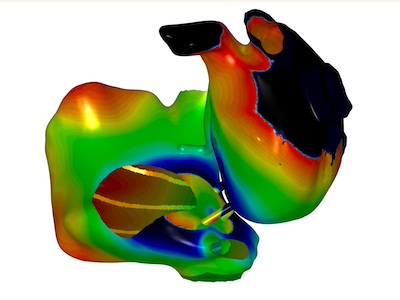Benchmarking acceleration methods for atrial simulations
- Forschungsthema:Computermodelle des Herzens
- Typ:Masterarbeit
- Betreuung:
- Bearbeitung:
Motivation
Modeling and simulating patient-specific heart geometries hold great potential for helping electrophysiologists identify the origins of atrial fibrillation (AF) and accelerate clinical interventions. AF vulnerability is a key measurement for a first assessment of patient’s difference, treatment success rates or drug effectiveness. However, assessing AF vulnerability in silico remains a time and resource heavy endeavor. To decrease computational time while also remaining highly accurate, multiple approaches exist. These methods include cellular automaton [1], the fibrotic kerel signature [2], machine learning [3] and the DREAM [4]. While each of them promises an effective way to reduce time while maintaining a high accuracy no direct comparison has been done. This work will thus use these leading approaches and compare their accuracy and efficiency.
Simulation of atrial fibrillationTask
You will use and adapt multiple approaches like the cellular automaton [1], the fibrotic kerel signature [2], a machine learning classifier [3] and the DREAM [4]. These implementations will then be evaluated based on different benchmarks which you will design. These benchmarks will focus on atrial fibrillation vulnerability assessment.
[1] G. S. Romitti et al., Medical Image Analysis 2025
[2] T. Banduc et al., Medical Image Analysis 2024
[3] P. Martinez Diaz et al., Computing in Cardiology Conference 2024
[4] C. Barrios Espinosa et al., Engineering with Computers 2025

